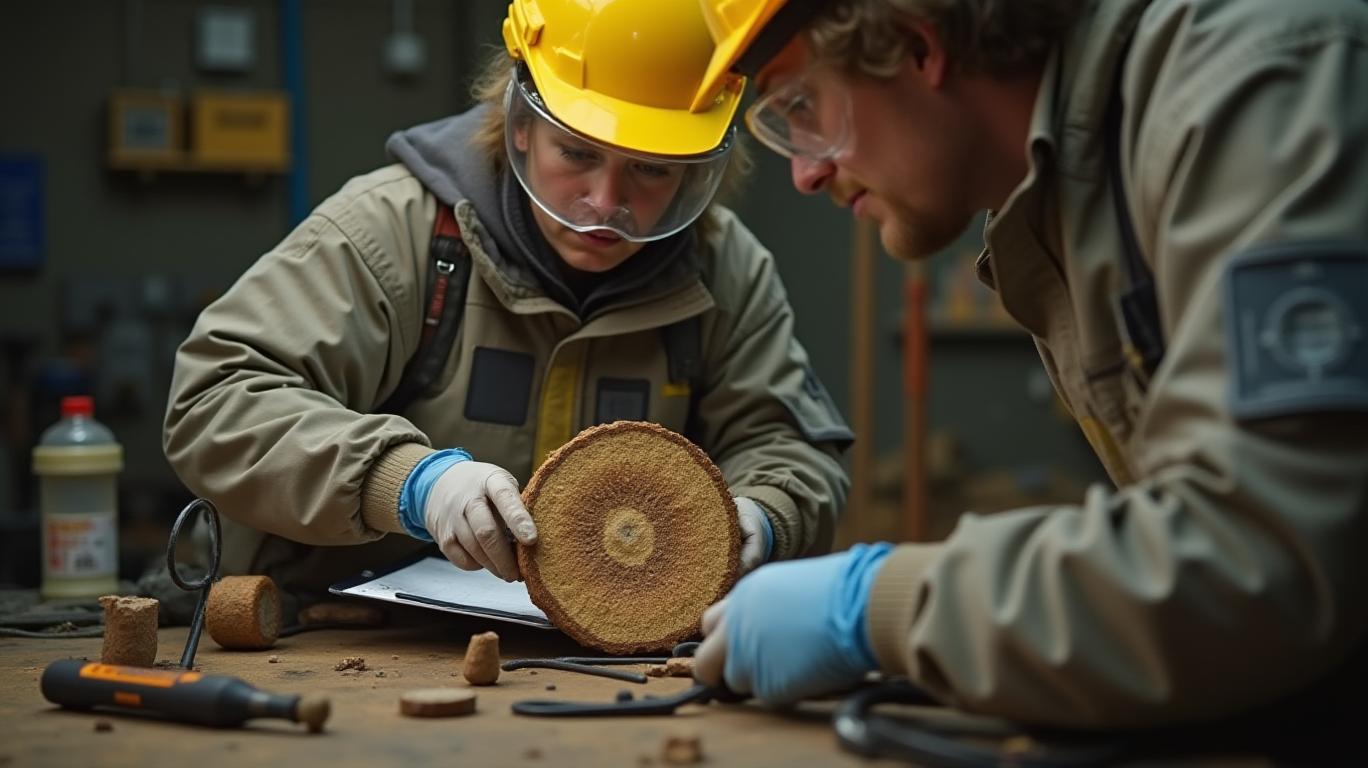Gold Terra's Deep Dive into the Campbell Shear: A Strategic Move with High-Stakes Potential
The mining sector has long been driven by the pursuit of untapped riches buried deep within the Earth. Gold Terra Resource Corp. (GTVOF) is now testing that premise with its recent drilling campaign at the Con Mine Option (CMO) Property in Canada’s Northwest Territories. By successfully intersecting the Campbell Shear (CS) gold zone at a vertical depth of 2,560 meters—600 meters below the historic Robertson Shaft—the company has taken a critical step toward unlocking a high-grade gold target that could reshape its future. But with assay results still pending, investors are left weighing potential rewards against the uncertainties inherent in such a bold exploration bet.

Geological Significance: A Test of Depth and Deformation
The Campbell Shear, a structural gold-rich zone that historically produced 14 million ounces (Moz) of gold across the broader Yellowknife greenstone belt, has long been a focus for exploration. Gold Terra’s drilling in 2025 targeted the continuation of this structure at unprecedented depths. The wedge hole GTCM25-056A, stopped at 2,837 meters, intersected the CS at 2,665–2,707 meters downhole, with visible mineralization (crackle brecciation, quartz veins, sulfides) in the deepest portion. This aligns with the company’s geological model, which postulates that the CS’s high-grade gold zones persist far below historic mine workings.
However, the absence of assay results for this intersection is a key caveat. While the visual characteristics of the rock are promising, quantitative data—such as gold grades—are essential to assessing the economic viability of the zone. Earlier drilling in 2023, for instance, returned 12.63 grams per tonne (g/t) gold over 1.7 meters in the CS at shallower depths, a strong indicator of the zone’s potential.
Strategic Context: Expanding Resources and Unlocking Value
The 2025 drilling program is part of a broader effort to expand the September 2022 Mineral Resource Estimate (MRE), which reported 109,000 Indicated ounces and 432,000 Inferred ounces along the CS between surface and 400 meters depth. By testing deeper extensions, Gold Terra aims to tap into a historical gold-rich domain: the CS is thought to have hosted 5.1 Moz of gold at 16 g/t Au in the Con Mine’s upper levels. If the 2025 intersection mirrors this grade at depth, it could add multi-million-ounce potential—a claim highlighted by CEO John Burzynski, who noted the CS’s historical production rate of 1 Moz per 200 meters of vertical depth.
The project also advances Gold Terra’s partnership with Newmont, which holds a stake in the CMO Property. By meeting a C$8 million Qualifying Expenditure threshold, Gold Terra has secured progress toward fulfilling the CMO’s option agreement, reducing dilution risks and bolstering its negotiating power.
Risks and Challenges: The Assay Wait and the Deeper Game
While the drilling success is a positive step, the pending assays represent a critical hurdle. Even promising visuals—such as the crackled brecciation and sulfide-rich zones in GTCM25-056A—cannot confirm commercial grades without lab results. A disappointment here could derail investor confidence and delay project timelines.
Technical risks are also significant. Drilling to 2,800 meters—a depth rivaling some of the world’s deepest mines—requires advanced geology, engineering, and cost management. Gold Terra’s lateral wedge hole (GTCM25-056B) aims to refine the target’s geometry, but any delays or cost overruns could strain the company’s balance sheet.
Conclusion: A High-Reward, High-Risk Gamble
Gold Terra’s deep drilling at the Campbell Shear is a bold move with outsized implications. If assays confirm the zone’s high-grade continuity, the project could add millions of ounces to its resource base, positioning the company as a leader in reviving the Yellowknife district—a region that once produced 14 Moz of gold.
Yet, until the lab results arrive, investors must remain cautious. The stock’s recent performance (see data visualization) reflects this uncertainty; a positive assay could trigger a sharp rally, while a miss might lead to a reassessment of the company’s risk profile.
For now, the strategic value of the CMO Property—its historical pedigree, Newmont’s involvement, and the geological coherence of the CS model—supports a hold rating. But with assay results expected soon, the next few months will be pivotal. Gold exploration is a numbers game, and Gold Terra’s fate at 2,560 meters hinges on the simplest of metrics: grams per tonne.
The author is an analyst specializing in mining and resource economics. Views expressed are for informational purposes only and should not be construed as investment advice.


_442a2dcc1749832873286.jpeg)
_e68fac6d1749831664430.jpeg)






